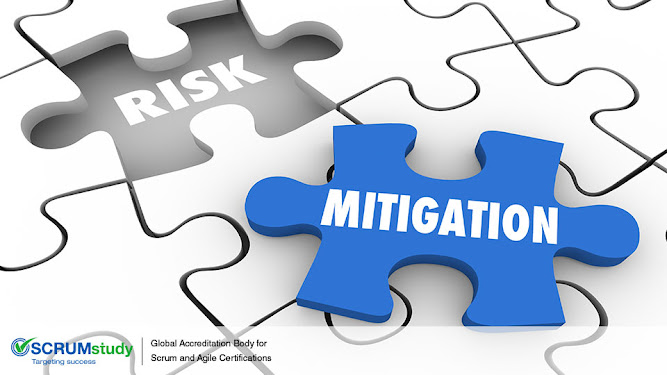Scrum Master: From Coach to Certified Leader - Your Training and Certification Journey
The role of a Scrum Master is pivotal. As a facilitator, coach, and leader, the Scrum Master ensures the team adheres to Scrum practices and principles, driving projects towards success. This article explores the comprehensive journey from becoming a proficient coach to achieving certification as a Scrum Master, highlighting the training and certification processes essential for this transformation.
Understanding the Role of a Scrum Master
The Scrum Master as a Coach
The primary responsibility of a Scrum Master is to coach the team in understanding and implementing Scrum practices effectively. This involves:
- Guiding the Team: Helping team members understand their roles and responsibilities within the Scrum framework.
- Facilitating Scrum Events: Ensuring that Scrum events (such as Sprint Planning, Daily Standups, Sprint Reviews, and Retrospectives) are conducted efficiently.
- Removing Impediments: Identifying and addressing any obstacles that hinder the team’s progress.
The Scrum Master as a Leader
Beyond coaching, a Scrum Master must exhibit strong leadership qualities. This includes:
- Promoting Agile Principles: Advocating for the values and principles of Agile methodologies within the organization.
- Empowering the Team: Encouraging self-organization and accountability among team members.
- Fostering a Collaborative Environment: Creating a culture of trust and open communication within the team.
Embarking on Your Scrum Master Training Journey
Foundational Knowledge
Before diving into formal training, it’s crucial to build a solid foundation in Scrum fundamentals. This includes:
- Understanding Scrum Framework: Familiarizing yourself with the Scrum Guide, which outlines the roles, events, and artifacts of Scrum.
- Agile Principles: Gaining a thorough understanding of the Agile Manifesto and its twelve principles.
Selecting the Right Training Program
Choosing a high-quality training program is essential for becoming an effective Scrum Master. Consider the following factors:
- Accredited Providers: Opt for programs offered by accredited organizations such as Scrum Alliance or Scrum.org.
- Experienced Trainers: Look for courses led by seasoned Scrum professionals with extensive real-world experience.
- Comprehensive Curriculum: Ensure the program covers all aspects of the Scrum framework, from basic principles to advanced practices.
Hands-On Practice
Practical experience is a cornerstone of Scrum Master training. Engaging in hands-on exercises, simulations, and real-world projects helps solidify your understanding and application of Scrum principles. This experiential learning approach is crucial for developing the skills needed to handle actual project scenarios effectively.
Achieving Scrum Master Certification
Types of Scrum Master Certifications
Several certification paths are available, each catering to different levels of experience and expertise:
- Certified ScrumMaster (CSM): Offered by Scrum study, this certification is ideal for beginners. It focuses on the fundamentals of Scrum and the role of the Scrum Master.
- Professional Scrum Master (PSM): Provided by Scrumstudy.com, this certification comes in three levels (PSM I, PSM II, PSM III), each progressively more challenging and in-depth.
- SAFe Scrum Master (SSM): This certification is part of the Scaled Agile Framework (SAFe) and is suitable for those working in large-scale Agile environments.
Preparation for Certification Exams
Preparing for the certification exam involves:
- Study Materials: Utilizing study guides, books, and online resources tailored to your chosen certification path.
- Practice Exams: Taking practice tests to familiarize yourself with the exam format and identify areas needing improvement.
- Study Groups: Joining study groups or forums to share knowledge and insights with fellow Scrum enthusiasts.
Maintaining Your Certification
Once certified, it’s important to stay current with the latest Scrum practices and developments. This can be achieved through:
- Continuous Learning: Attending workshops, webinars, and advanced courses to deepen your Scrum knowledge.
- Community Involvement: Participating in Scrum and Agile communities to exchange ideas and stay updated on industry trends.
- Professional Experience: Applying Scrum principles in your daily work to refine your skills and maintain your expertise.
The Path to Becoming a Certified Scrum Leader
Building Leadership Skills
To transition from a Scrum Master to a certified Scrum leader, focus on developing key leadership skills:
- Strategic Thinking: Understanding the broader business context and aligning Scrum practices with organizational goals.
- Change Management: Effectively managing and leading change within the organization to foster Agile transformation.
- Mentorship: Guiding and mentoring other Scrum Masters and team members to build a culture of continuous improvement.
Advanced Certifications
Pursuing advanced certifications can further validate your expertise and leadership capabilities. Consider certifications such as:
- Certified Scrum Professional (CSP): Offered by Scrum study, this certification demonstrates advanced Scrum knowledge and experience.
- Scaled Agile Framework (SAFe) Program Consultant (SPC): This certification equips you with the skills to implement Agile practices at an enterprise level.
Conclusion
The journey from a Scrum coach to a certified Scrum leader is both challenging and rewarding. By investing in quality training, achieving relevant certifications, and continuously honing your skills, you can excel as a Scrum Master and lead your teams to success in Agile project management. Embrace this journey with dedication and a commitment to lifelong learning.




Comments
Post a Comment